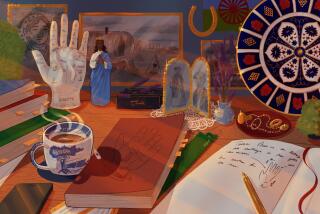The EU’s ugly little challenge
- Share via
ON NEW YEAR’S day, the European Union swelled by another 28 million people. The inclusion of Romania and Bulgaria in the European fold is cause for celebration in the streets of Bucharest and the courtyards of Sofia. For two of Europe’s poorer countries, inclusion in the EU brings innumerable benefits, not the least roads, recognition, grants, travel access and a sundering of the Soviet past.
Yet for many Europeans — in Paris, in Dublin, in Brussels and perhaps even in Bucharest and Sofia — it spells the inclusion of 3 million potential problems: yet more Gypsies.
In a week that also heralds 2007 as “The European Year of Equal Opportunities for All,” the word “Gypsy” still holds negative freight, even among those to whom it applies: the Roma. With ethnic and cultural roots stretching back to ancient India, the Roma are a diaspora community to rival the Irish and the Jews. Nonterritorial, they number anywhere from 12 million to 14 million worldwide, of whom roughly 10 million are found in Europe.
Yet European newspaper editors are stumped by how they should address the largest minority on the continent. Town mayors all over Eastern Europe often avoid the term altogether and talk instead of “whitening out” their inner cities.
If a society recognizes itself, and ultimately critiques itself, on how it treats its most downtrodden, then surely the acid test for the EU is its ongoing treatment of the Roma. They can be found living in the housing projects of Paris, the toxic dumps in Kosovo, the ruined outskirts of villages in eastern Slovakia, the warren of backstreets in old Polish towns and the gray flatlands of Dublin. Each place has its own — sometimes tiny — community. But when taken together, these groups form a giant cultural mosaic, one that leans overwhelmingly toward poverty.
There are, of course, Romani doctors, psychologists, poets and scholars who have called for a new era of consciousness. They point to Romani contributions to the world of arts, politics and music by figures of Gypsy descent as diverse as Pablo Picasso, Django Reinhardt, Bob Hoskins, Charlie Chaplin, flamenco legend Carmen Amaya and even President Clinton.
But the old cliches of lying, cheating, stealing and breaking curfew with violin endure.
“The persistent, relentless portrayal of Roma as rootless, lawless, immoral, childlike thieves will ensure that anti-Gypsy prejudice will remain firmly a part of Euro-American attitudes,” says Ian Hancock, a Romani scholar at the University of Texas.
In Bratislava one afternoon — while I was researching the situation of the Roma in Slovakia — a young intellectual engaged me in a debate on civil rights in the U.S. He knew of Martin Luther King Jr., of Stokely Carmichael, even the poetry of Daniel Berrigan. He was a staunch and eloquent defender of the marginalized, but when I asked him about contemporary issues of sterilization, school discrimination and burnings of Romani houses in his own country, he said without rancor: “Of course, yes, but they’re just Gypsies.” Malice is sometimes another name for silence.
The young girl paddling through the polluted streambed in Kosovo isn’t likely to have heard of the “Year of Equal Opportunities.” The boy huffing glue in the broken elevator of the Saint-Denis project is probably not aware that the decade from 2005 to 2015 is supposed to be “The Decade of Roma Inclusion.”
It is important, of course, not to turn any culture into a list of sorrows and benedictions. The Roma themselves have a deep ambivalence about their identity. Although they are as internally diverse as any other group, it’s the roving gangs, the scams, the illiteracy, the violence — and the silence — that often get the headlines.
“If I were a Chechen or a Palestinian, I’d be out there throwing rocks,” one activist told me in Hungary. “When you don’t have a voice, you sing into the bottle.”
Scholars such as Ian Hancock have called on governments, poets, journalists, activists and the general public to remember that the Roma, like African Americans, were enslaved in Central Europe only 150 years ago. The Holocaust sent Gypsy ash up the chimneys. This, and other bedrock history, is the story that must unfold into a larger understanding if, this week, the 3 million Roma from Bulgaria and Romania are not to be considered “just Gypsies.”
“The struggle of man against power is the struggle of memory against forgetting,” says Czech novelist Milan Kundera.
The European call for inclusion is decent and right. The politicians and bureaucrats behind the sound bites mean well. Why not be in the habit of hoping for a better world?
Yet so much about Romani history is still wrapped up in a willful forgetfulness. It is not that Europe or America doesn’t care — dozens of conferences and nongovernmental agencies confront “the Roma question” in capital cities each year, and 2007 promises to be a bonus year — but the prevailing attitude still echoes the old Slovakian joke: “What is small, dark, filthy and knocking on the door?” The answer is not just the future, but the past as well.
More to Read
Sign up for Essential California
The most important California stories and recommendations in your inbox every morning.
You may occasionally receive promotional content from the Los Angeles Times.










